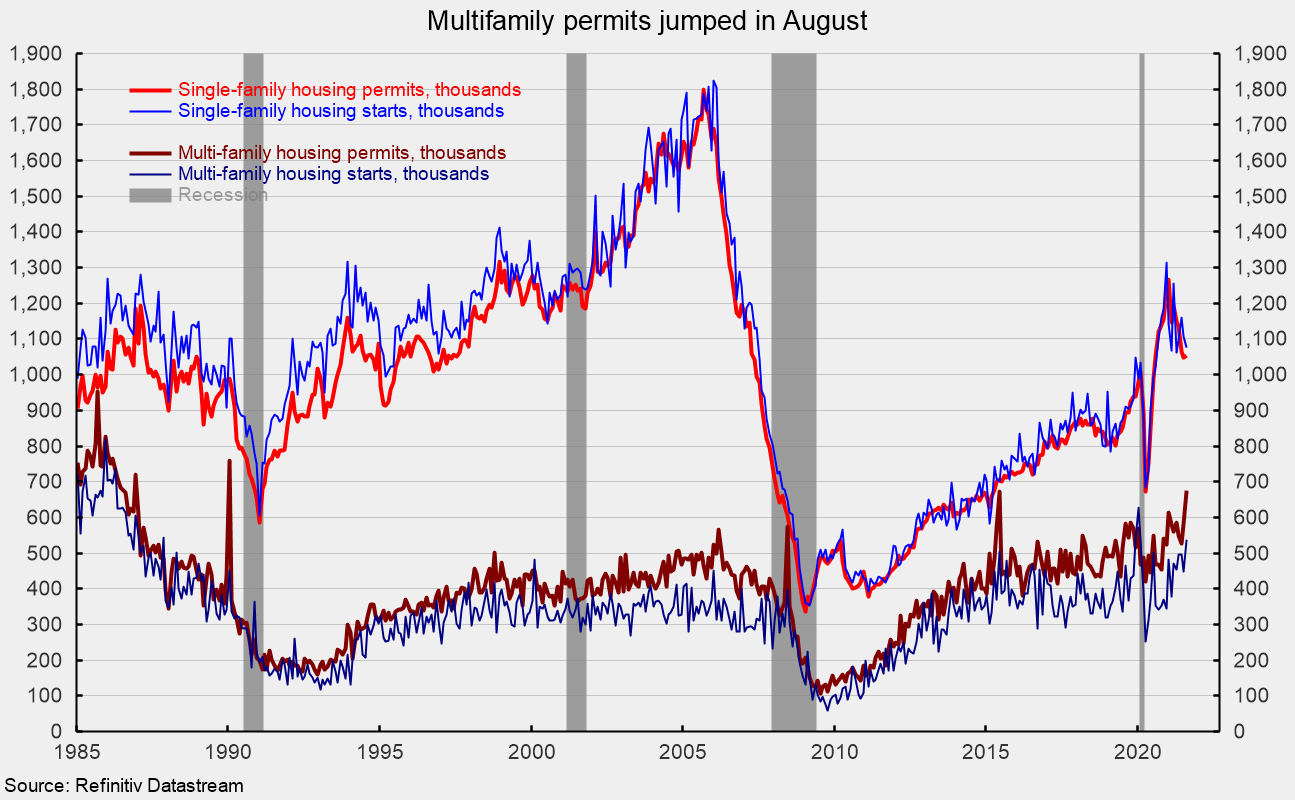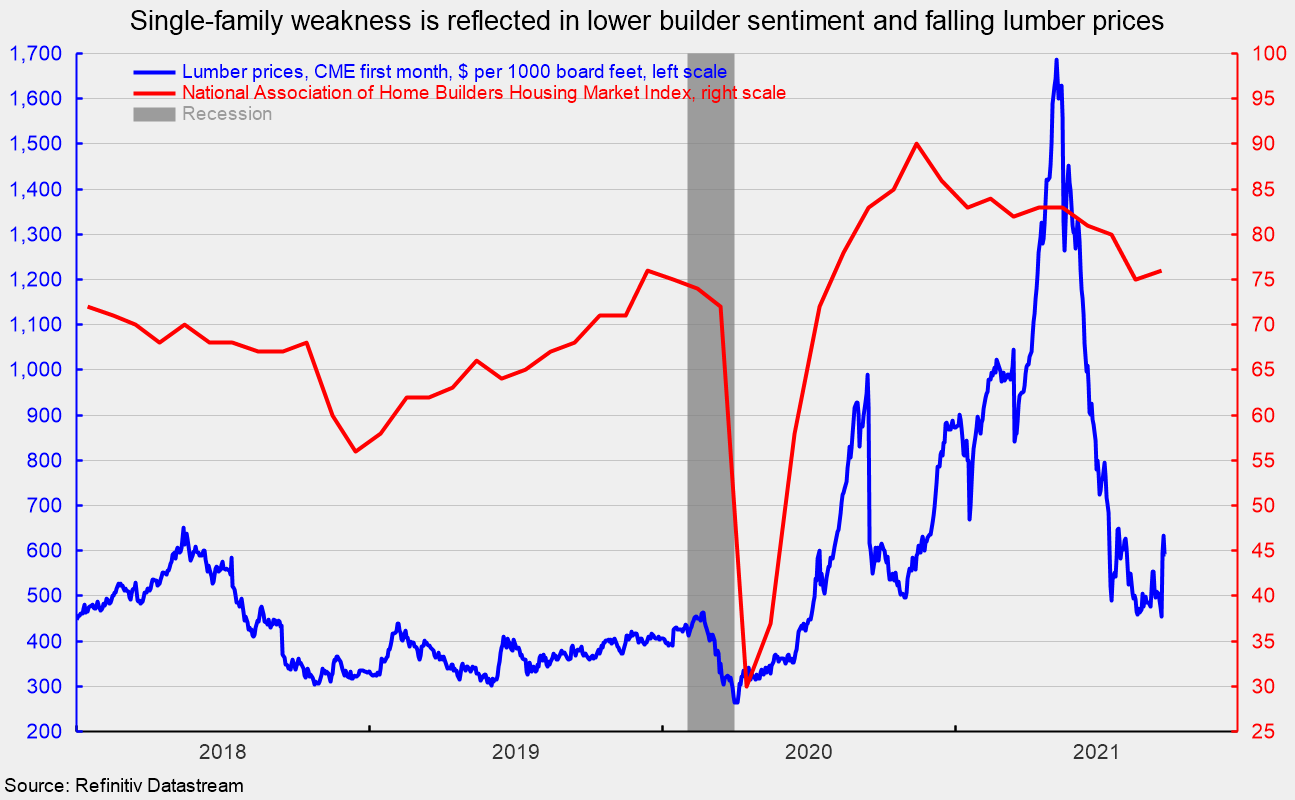Multifamily Segment Leads Housing Market Construction in August
Total housing starts rose to a 1.615 million annual rate in August from a 1.554 million pace in July, a 3.9 percent increase. From a year ago, total starts are up 17.4 percent. Total housing permits also rose in August, posting a 6.0 percent gain to 1.728 million in August from 1.630 million in July. Total permits are 13.5 percent above the August 2020 level.
The dominant single-family segment saw starts fall 2.8 percent for the month to a rate of 1.076 million and are up just 5.2 percent from a year ago. Single-family permits managed just a 0.6 percent gain to 1.054 million versus 1.048 million in July. Single-family starts and permits have been trending lower from peaks around the start of the year (see first chart).
Starts of multifamily structures with five or more units jumped 21.6 percent to 530,000 and are up a robust 60.1 percent over the past year while starts for the two- to four-family-unit segment sank 18.2 percent to 9,000. Combined, multifamily starts were up 20.6 percent to 539,000 in August (see first chart), and show a gain of 52.7 percent from a year ago.
Multifamily permits for the 5-or-more group surged 19.7 percent to 632,000 while permits for the two-to-four-unit category fell 22.2 percent to 42,000. Combined, multifamily permits were 674,000, up 15.8 percent for the month (see first chart) and 44.3 percent from a year ago. The post-lockdown recovery in housing had been supported by a surge in demand as consumers sought less dense housing. However, since December, single-family activity has been trending lower. It may be that some of the rush to less dense housing that drove the single-family surge in activity in the second half of 2020 is starting to ease as the economy opens, more people get vaccinated, and workers return to offices, though the wave of new cases of Covid due to the Delta variant is delaying some reopenings and increasing uncertainty. Furthermore, surging home prices have pushed some buyers out of the market.
The surge in housing demand that sent lumber prices soaring has also reversed course as sales and construction show signs of cooling. Lumber prices peaked around $1,686 per 1,000 board feet and are currently around $600, a drop of about 65 percent. However, that is still above the $300 to $500 range of 2019 (see second chart).
Meanwhile, the National Association of Home Builders’ Housing Market Index, a measure of homebuilder sentiment, ticked up in September, to 76 from 75 in August, but remains below the all-time peak of 90 in November 2020 (see second chart). Overall sentiment remains relatively high, but labor issues and supply chain disruptions continue to be significant problems.
Two of the three components of the Housing Market Index rose in September. The current single-family sales index rose to 82 from 81 in the prior month and the traffic of prospective buyers index was up two points to 61 but the expected single-family sales index remained unchanged at 81 in September.
There may be enough pent-up demand for housing to grow at a solid pace over the next several months, but rapidly rising home prices will likely result in continued cooling. Furthermore, uncertainty caused by the current wave of new Covid cases and the potential for higher mortgage rates if the economy gains momentum could also dampen future demand. For the homebuilders, still-elevated materials costs, supply-chain issues and labor difficulties are all impacting both supply and profits.







